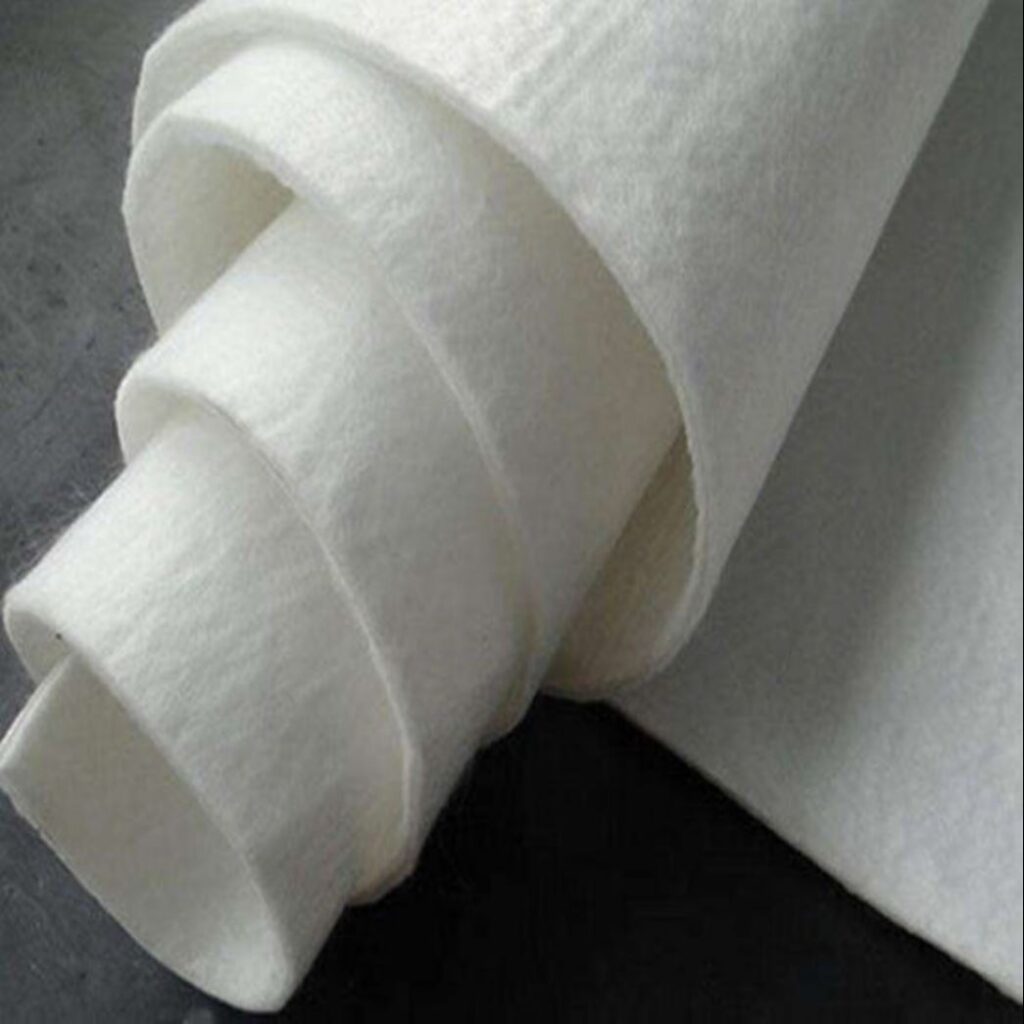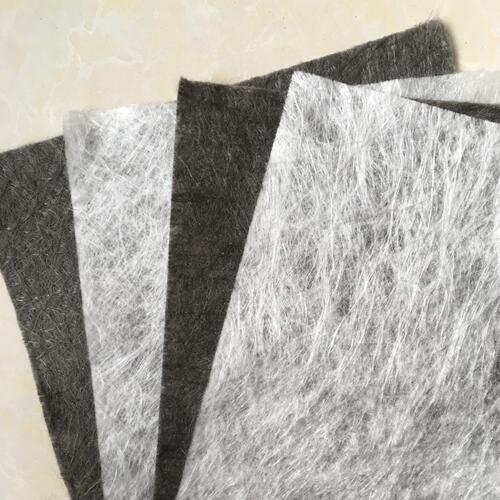What is fiberglass geotextile?
Fiberglass geotextile is a type of geosynthetic material made from glass fibers. It’s commonly used in civil engineering and construction applications where high strength, durability, and chemical resistance are required. Here are some key characteristics and applications of fiberglass geotextiles:
Material Composition: Fiberglass geotextiles are made from woven or non-woven glass fibers. These fibers are often treated with a sizing agent to improve adhesion and compatibility with other materials, such as resins or asphalt.
Strength and Durability: Fiberglass geotextiles are known for their high tensile strength and durability. They can withstand heavy loads, harsh environmental conditions, and chemical exposure, making them suitable for applications where long-term performance is essential.
Chemical Resistance: Fiberglass geotextiles are resistant to a wide range of chemicals, including acids, alkalis, and organic solvents. This resistance makes them suitable for use in environments where exposure to corrosive substances is likely.
Dimensional Stability: Fiberglass geotextiles exhibit excellent dimensional stability, meaning they maintain their shape and properties over time, even when subjected to changes in temperature, moisture, or stress.
Applications: Fiberglass geotextiles are used in various civil engineering and construction applications, including:
Reinforcement of asphalt pavements and concrete structures to reduce cracking and increase load-bearing capacity.
Separation and stabilization of soil and aggregate layers in road construction, railway embankments, and retaining walls.
Filtration and drainage in drainage systems, landfills, and erosion control applications.
Protection of geomembranes and other waterproofing systems from puncture and mechanical damage.
Overall, fiberglass geotextiles offer excellent mechanical properties, chemical resistance, and dimensional stability, making them a versatile solution for a wide range of geotechnical and civil engineering applications.

What is the function of fiberglass geotextile?
The function of fiberglass geotextile is multifaceted, owing to its unique properties and characteristics. Here are some of its primary functions:
Reinforcement: Fiberglass geotextile provides reinforcement to soils, aggregates, and other structural materials by distributing applied loads and reducing the risk of deformation or failure. It enhances the mechanical stability and load-bearing capacity of various civil engineering structures, such as roads, embankments, and retaining walls.
Separation: Fiberglass geotextile acts as a barrier between different soil or aggregate layers, preventing intermixing and maintaining the integrity of each layer. This separation function helps to improve the long-term performance and stability of construction projects, such as roads, railways, and landfills.
Filtration: Fiberglass geotextile allows water to pass through while retaining soil particles, thereby serving as a filtration medium in drainage systems, erosion control measures, and environmental protection applications. It helps to maintain the permeability and efficiency of drainage systems while preventing the migration of fine particles.
Protection: Fiberglass geotextile provides protection to underlying geomembranes, liners, and other vulnerable materials from puncture, abrasion, and mechanical damage. It acts as a cushioning layer that absorbs impact energy and reduces the risk of structural failure in critical infrastructure projects, such as landfills, reservoirs, and containment ponds.
Drainage: Fiberglass geotextile facilitates the efficient removal of excess water from soil layers and construction sites by promoting drainage and reducing the risk of waterlogging. It helps to maintain the stability and performance of engineered structures, such as roadways, embankments, and foundation systems, by managing groundwater levels and preventing saturation.
Overall, the function of fiberglass geotextile is to enhance the performance, durability, and resilience of civil engineering and construction projects by providing reinforcement, separation, filtration, protection, and drainage capabilities. Its versatile applications make it an essential component in various infrastructure projects worldwide.

What are the advantages of fiberglass geotextile?
Fiberglass geotextiles offer several advantages due to their unique properties and characteristics. Here are some of the key advantages:
High Strength: Fiberglass geotextiles exhibit excellent tensile strength and modulus, making them capable of withstanding heavy loads and high stress levels. This strength enables them to provide effective reinforcement and stabilization in civil engineering and construction applications.
Durability: Fiberglass geotextiles are highly durable and resistant to environmental factors such as UV radiation, moisture, and chemical exposure. They maintain their structural integrity and performance over time, ensuring long-term reliability and stability in infrastructure projects.
Chemical Resistance: Fiberglass geotextiles are resistant to a wide range of chemicals, including acids, alkalis, and organic solvents. This resistance makes them suitable for use in environments where exposure to corrosive substances is likely, such as landfills, industrial sites, and contaminated soil remediation projects.
Dimensional Stability: Fiberglass geotextiles exhibit excellent dimensional stability, meaning they maintain their shape and properties over time, even when subjected to changes in temperature, moisture, or stress. This stability ensures consistent performance and prevents deformation or shrinkage in critical applications.
Versatility: Fiberglass geotextiles are versatile and can be tailored to meet specific project requirements by adjusting factors such as fiber type, weave pattern, and surface treatment. They can be used in a wide range of applications, including reinforcement, separation, filtration, protection, and drainage, offering flexibility and adaptability in engineering designs.
Ease of Installation: Fiberglass geotextiles are lightweight and easy to handle, transport, and install on-site. They can be easily cut, shaped, and positioned as needed, reducing labor costs and construction time in infrastructure projects.
Environmental Compatibility: Fiberglass geotextiles are environmentally friendly and inert, posing minimal risk of contamination or harm to surrounding ecosystems. They are non-toxic, non-biodegradable, and resistant to biological degradation, ensuring sustainable and eco-friendly solutions for geotechnical and civil engineering applications.
Overall, the advantages of fiberglass geotextiles include high strength, durability, chemical resistance, dimensional stability, versatility, ease of installation, and environmental compatibility, making them a preferred choice for various infrastructure projects worldwide.
近期文章
Author
-

Founded in 2002, Tinhy's team focuses on the manufacturing, marketing, installation, application and research and development of geosynthetic materials.
View all posts

